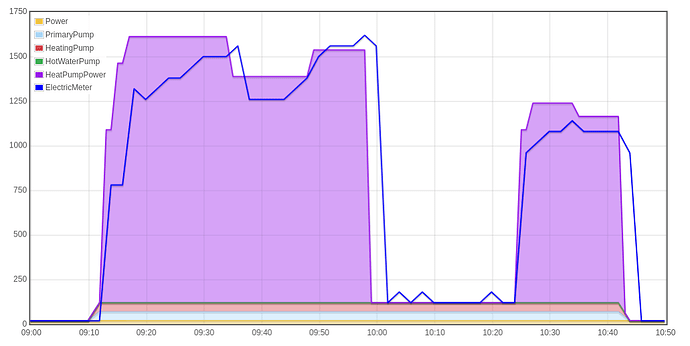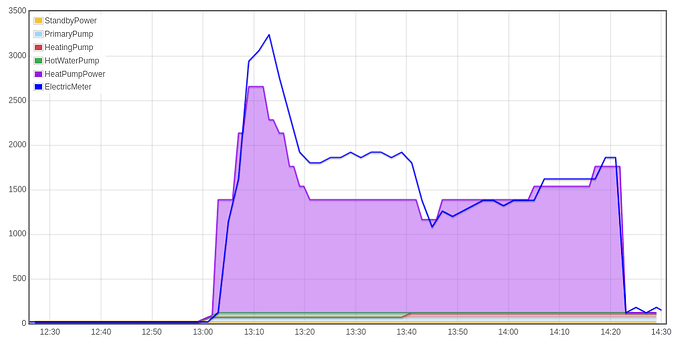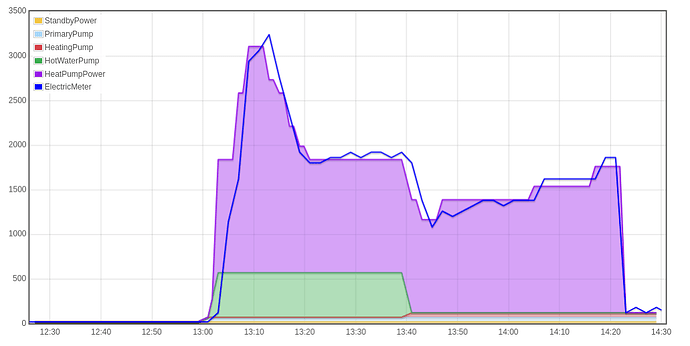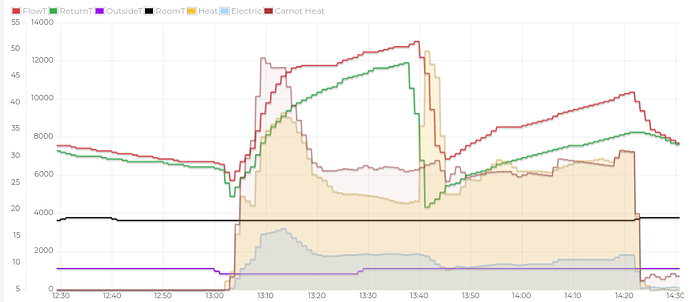I’ve just discovered that my heat pump seems to draw 500 W more power during the heat pump cycle compared to space heating. I’m curious if anyone else sees the same, or can suggest why this is.
This is for a Mitsubishi Ecodan 11.2 kW with pre-plumbed cylinder that is heated via a plate heat exchanger. There are 3 pumps in the system: primary to the outside unit, central heating via LLH, and one to pump potable water from the cylinder through the heat exchanger.
I have an electric meter on the whole system, including the pumps and controller. I also know how hard the compressor is running, as a percentage of it maximum input power (3.73 kW). This means I can compare the two and calculate the consumption of the other components.
I already know that the standby power is around 20 W, and there are periods when the primary and central heating pumps are running but the compressor is not so I know they take about 50 W each. Plotting these on a chart stack up nicely, so I’m moderately confident that it’s pretty close, give or take 10%.
Then I look at a period of water heating, and find my numbers above don’t fit.
Chart below shows DHW up to 13:40, followed immediately by space heating:
Instead of 50 W for the pump, I need to factor in 500 W to get the total power match what the meter is reporting.
This can also be seen by simulating heat output using Carnot equation. I matched the heatpump factor (0.525) on the heating portion, then zoomed out to show both. Carnot is really expecting to see 2 kW more heat for DHW given the amount of electricity going in, but it’s just not there.
While I’ve long accepted that COP just isn’t so good during DHW cycles, I was surprised to find this out. Surely a pump that moves water from the cylinder to the heat exchanger and back doesn’t need to be 10x more powerful that the one for 20m of primary circuit? Am I missing something?
I looked at a few other similar systems and think I see the same effect there too, some more than others, so maybe I’ve not seeing the same thing.




